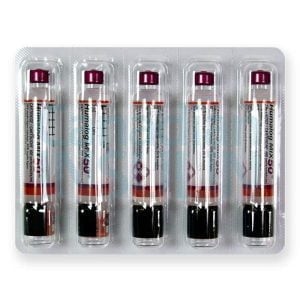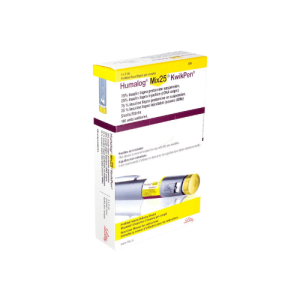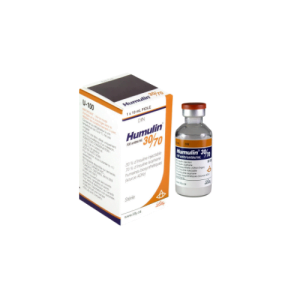What are insulin analogs?
Insulin analogs are similar to human insulin. However, these synthetic man made insulin have a small change to their molecular structure, which makes them desirable when they are injected under the skin. Most hormones produced by our bodies such as insulin are proteins, meaning that their structure is made of amino acids. There are about 20 different varieties of amino acids, and the sequence they follow to make a molecule of protein determines the function and structure of the protein. The human insulin consists of two chains of amino acids, i.e. A chain and B chain. The A chain is made of 21 specific amino acids while the B chain consists of 30 specific amino acids. On the other hand, insulin analogues have different amino acids, which are substituted or added at different positions along the A chain and the B chain. These changes in molecular structure do not affect the ability of insulin analogues to control the level of blood sugar in the body. Instead, it allows the insulin analog to be absorbed more uniformly or rapidly by the body.
Types of insulin analogs
There are two main types of insulin analogs, i.e. rapid acting insulin and long acting insulin. These two types of insulin analogues vary in terms of onset, i.e. when they begin to work, peak action, i.e. when their effect in the body is highest and duration of action, i.e. how long they work in the body. In addition to these two types of insulin analogs, we also have pre-mixed analog insulin, which is a combination of rapid acting insulin and long acting insulin.
Rapid acting
Rapid acting insulin acts very fast by reducing high blood sugar levels that comes after eating carbohydrate foods. They mimic the natural production of insulin after a meal. Rapid acting insulin is commonly prescribed to people who have type 1 diabetes, although it can be used to treat people with type 2 diabetes. This type of insulin analogues enters the bloodstream a few minutes after injection. Because of their ability to act very fast, there is a high risk of patients experiencing low levels of blood glucose or hypoglycemia. Therefore, you should avoid changing your insulin dosage without consulting with your doctor. It is advisable you inject rapid acting insulin within 5 to 10 minutes of taking a meal. Rapid acting insulin can be taken via injections or using an insulin pump.
The three common types of rapid acting insulins include the following:
- Insulin lispro
Insulin lispro is an Eli Lilly product which is marketed using the brand name Humalog. The molecular structure of insulin analog is similar to human insulin only that two positions in the B chain, i.e. B28 and B29 are interchanged. This helps insulin lispro to work more rapidly after injection, hence they get absorbed into the bloodstream faster. Insulin lispro usually begins to work faster, i.e. 15 minutes compared to regular insulin 30 to 60 minutes. However, insulin lispro only lasts for about 3 to 4 hours compared to regular insulin 6 to 10 hours. Because of its rapid action, insulin lispro should be injected within 15 minutes after taking a meal. Insulin lispro can be combined with long acting insulin or intermediate acting insulin to achieve a longer period of blood sugar control.
- Insulin aspart
Insulin aspart is a product of Novo Nordisk that is marketed with the brand name NovoLog. This type of rapid acting insulin is different from human insulin in that aspartic acid replaces proline at position B28. This change in molecular structure helps insulin aspart to be absorbed much faster into the bloodstream. Rapid acting insulin analogues such as insulin aspart works the same way as the insulin produced by people who don’t have diabetes. Insulin aspart is used to treat people with diabetes mellitus to help them manage high blood sugar. When insulin aspart is injected, it works rapidly to stabilize blood glucose levels. It has an onset period of 10 to 20 minutes and can last between 3 to 5 hours.
- Insulin glulisine
It is a rapid acting insulin which is marketed under the name Apidra by the company Sanofi-Aventis. This type of rapid acting insulin analog differs from the human insulin in that asparagine at position B3 is replaced by lysine, while lysine in position B29 is replaced by the amino acid glutamic acid. This change helps insulin glulisine to be absorbed faster into the blood compared to human insulin. Insulin glulisine has an onset of 15 minutes while the peak period is between 30 to 60 minutes. As a rapid acting insulin, it is recommended you take insulin glulisine within 15 minutes of taking a meal.
Long acting
Long acting insulins have a long peak period, compared to short acting insulin. When you inject long acting insulin, they can control your blood glucose levels for a whole day. Long acting insulin is also known as background or basal insulin. That means they work in the background to control your blood glucose levels throughout the day. Long acting insulin doesn’t have a peak period, which allows them to work consistently during the day.
The following are common types of long acting insulin:
- Insulin detemir
Insulin detemir is produced by Novo Nordisk under the brand name Levemir. Levemir is an insulin analog which achieves consistent activity throughout the day.
- Insulin glargine
Insulin glargine is produced by Sanofi Aventis and is marketed using the brand name Lantus. Insulin glargine is usually injected once every day, but your doctor can advise you to take two injections per day.
- Insulin degludec
Insulin degludec is an ultra long acting insulin that is produced by Novo Nordisk under the brand name Tresiba. Insulin degludec has a longer duration period of 42 hours, which offers more flexibility injection times compared to other long acting insulins.
Pre mixed
Pre mixed insulin involves a combination of fast acting insulin and long acting insulin. The combination of insulins with different onsets and durations helps you to manage your blood glucose levels more effectively. That means, fast acting insulin works by managing increases in blood sugar right after eating. While long acting insulin is effective in managing blood sugar between meals and overnight.
These types of insulin analogs are used to control high blood sugar levels in people with diabetes. However, note that there is no type of insulin analog that is right for everyone who have high blood sugar. This is because our insulin needs are different and tend to change over time. Your doctor will determine the right type of insulin analog you should use depends on your specific condition.
Disclaimer: Please note that the contents of this community article are strictly for informational purposes and should not be considered as medical advice. This article, and other community articles, are not written or reviewed for medical validity by Canadian Insulin or its staff. All views and opinions expressed by the contributing authors are not endorsed by Canadian Insulin. Always consult a medical professional for medical advice, diagnosis, and treatment.









